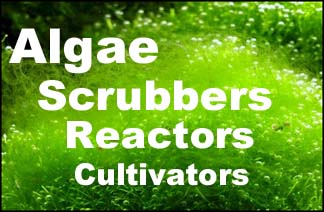OK. Thanks again for your replies. Let me see if I can recap where my questions stand, and move them forward. The essence of my prior questions were -
"If excess nutrients causes one startup problem, and too few nutrients causes another, what is the sweet spot found in the advertised 14 day breaking in?"
"How is the low nutrient problem caused by nuisance algae any different than a tank that has low nutrients from an ATS?"
And my question in response to the first reply, "Why are you recommending a modified shorter photoperiod now, when the recommendation for low nutrients was reduced intensity? They are not the same."
Let's start with the 3rd question above - about photoperiod vs intensity. Your answers all appear to indicate that reduction in intensity is the answer for a low nutrient situation. They further indicate that it may be appropriate for the startup period in general due to photo inhibition/saturation. That implies that the post suggesting photoperiod adjustment was incorrect - intensity reduction is more appropriate. However, since SantaMonica got a good startup SURF2 in 14 days with no mention of intensity reduction, then clearly it is not needed in all situations. Which leads us back to my initial question - the 1st question restated above about the nature of the 14 day break in sweet spot...
If we take SantaMonica's break in as factual (I do), then we can assume that photo inhibition/saturation does not always occur at levels that require reduced light intensity. As Floyd stated, whether a given system is able to support a fast startup is limited by the availability of macro and micro nutrients, and trace elements. In reply I understand that totally. Except that I disagree that you can never know. Sometime you should be able to KNOW. In a tank that is supporting a viable ATS, then you should know that a SURF2 has everything it needs to grow algae in that water. And as long as said viable ATS is actively growing algae, then it is not a low nutrient situation. And in all likelihood, it's not a high nutrient situation either. That can be tested - though "too high" has not been quantified.
So in my particular situation - SURF2 replacing a viable, growing ATS in a low (but not no or limited) nutrient system - I should be able to assume I'm giving the SURF2 everything it needs as far as nutrients go for productive algae growth. The only other factors are flow rate and light. But I've volume tested my air supply and trimmed it to just a shade over 5 liters per minute. So that's perfect. That leaves light. And unless SantaMonica deviated from the recommended 18 hour photoperiod recommended in the instructions, with no light intensity reduction, then if I set at an 18 hour photoperiod with the LED lid directly on the SURF2 floating scrubber, I should be a prime candidate for a 14 day break in. Particularly since I seeded the Green-Grabber surface and ribbons with nice green algae from my ATS.
The only thing that would cause me to question that conclusion is my 2nd, restated question above regarding the difference between a nuisance algae caused low nutrient tank and an ATS caused low nutrient tank. Since that question has still not been answered, it appears that I have no choice but to begin making assumptions...
EITHER a system that has an ATS that is growing nice, green algae does not fall into the category of "light intensity reduction needed, low nutrient, nuisance algae dominated" systems. In which case there should be no action required for me to get a nice, quick break in.
OR having that viable ATS can generate conditions similar to a "light intensity reduction needed, low nutrient, nuisance algae dominated" system. In which case I'll find that my SRURF2 is slow to break in, until and unless I reduce the light intensity.
Well I'm going to find out which it is. My system has no nuisance algae to speak of (though I do have to clean a small film off the glass weekly), and when I set up the SURF2 in in my system, NO3 was < 0.2 ppm, PO4 0.05 ppm. And I turned the ATS off - it's not competing. In 10 days or so, we should know if it's kicking in.
Thanks for the help.



 Reply With Quote
Reply With Quote